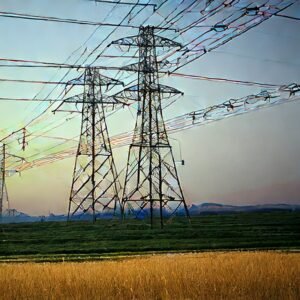Why electrical power is transmitted at high voltage?

For long-distance transmission electrical power is transmitted at high voltage for several reasons:
- Energy Loss and power loss: Energy loss can be considered as the waste of energy over a period of time due to various losses. Whereas power loss is the instantaneous shortage of power that occurs due to the same losses. When electrical power is transmitted over long distances, a significant amount of energy is lost as heat due to the resistance of the transmission lines. By transmitting power at a high voltage, the amount of energy lost can be reduced, as the heating due to resistance is proportional to the current. So same amount of power can be transmitted with high voltage and low current with a significant reduction in power loss. The power loss is directly proportional to the square of the current, so by reducing the current, the power loss is also reduced.
Power(W) = V I, Heat loss = I2R- For eg: – Case – 1 , Voltage = 10V , Current = 1A, then power = 10 x 1 = 10W. Here heat loss for a 1Ω resistance = 12 * 1 = 1W
- Case – 2 , voltage = 1V , Current = 10A, the power is still same = 10 x 1 = 10W. Here heat loss for a 1Ω resistance = 102 * 1 = 100W. So by reducing the current value the resistance loss in the line also can be reduced proportionally, which means that less power is lost as heat.
- Cost-effective: High voltage transmission is more cost-effective than low voltage transmission, as it requires smaller, less expensive equipment to transmit the same amount of power over a given distance. High-voltage transmission lines are also less expensive to construct, maintain and operate than low-voltage transmission lines compared to the amount of power both carry.
- Safety: High voltage transmission is safer than low voltage transmission, as the high voltage lines can be installed with tall towers and are not accessible to people or animals. This reduces the risk of electrical shock and other hazards associated with low-voltage transmission.
- Technical or practical limitations: If a large amount of power needs to be transmitted in low voltage and high current the size of the conductors, bus bars, breakers, and other equipment are difficult or not practical to make, install and operate.
Overall, electrical power is transmitted at high voltage in order to reduce energy loss, and power loss, improve efficiency, and make the transmission more cost-effective, and safer.